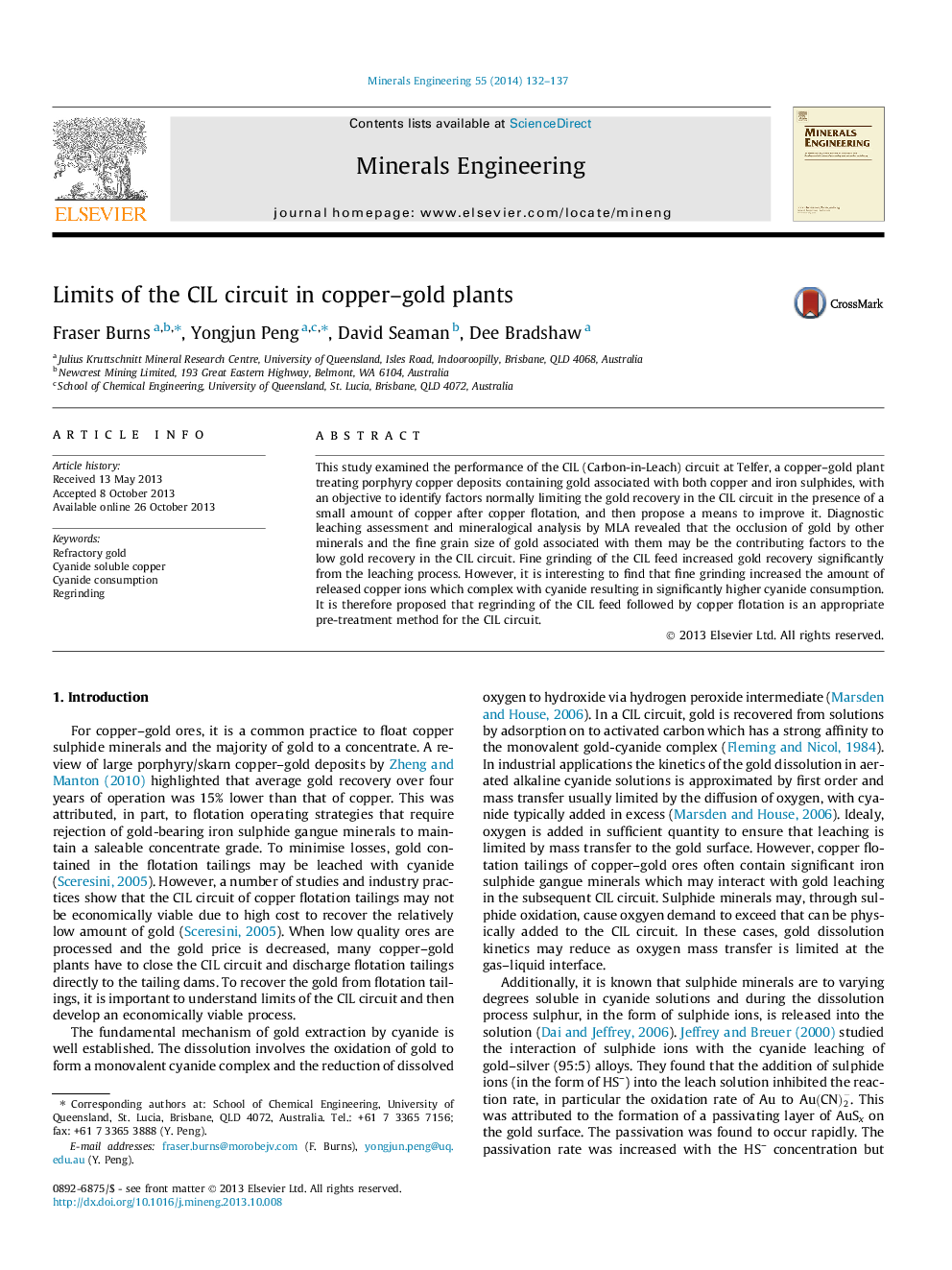| Article ID | Journal | Published Year | Pages | File Type |
|---|---|---|---|---|
| 233310 | Minerals Engineering | 2014 | 6 Pages |
•The leaching of flotation tailings in copper–gold plants (e.g., Telfer) is difficult.•The occlusion and fine grain size of gold attribute to the low leach recovery.•Fine grinding of the pyrite concentrate increases gold recovery from leach.•Fine grinding increases released copper ions and cyanide consumption.•Regrinding followed by copper flotation is proposed prior to the CIL circuit.
This study examined the performance of the CIL (Carbon-in-Leach) circuit at Telfer, a copper–gold plant treating porphyry copper deposits containing gold associated with both copper and iron sulphides, with an objective to identify factors normally limiting the gold recovery in the CIL circuit in the presence of a small amount of copper after copper flotation, and then propose a means to improve it. Diagnostic leaching assessment and mineralogical analysis by MLA revealed that the occlusion of gold by other minerals and the fine grain size of gold associated with them may be the contributing factors to the low gold recovery in the CIL circuit. Fine grinding of the CIL feed increased gold recovery significantly from the leaching process. However, it is interesting to find that fine grinding increased the amount of released copper ions which complex with cyanide resulting in significantly higher cyanide consumption. It is therefore proposed that regrinding of the CIL feed followed by copper flotation is an appropriate pre-treatment method for the CIL circuit.
